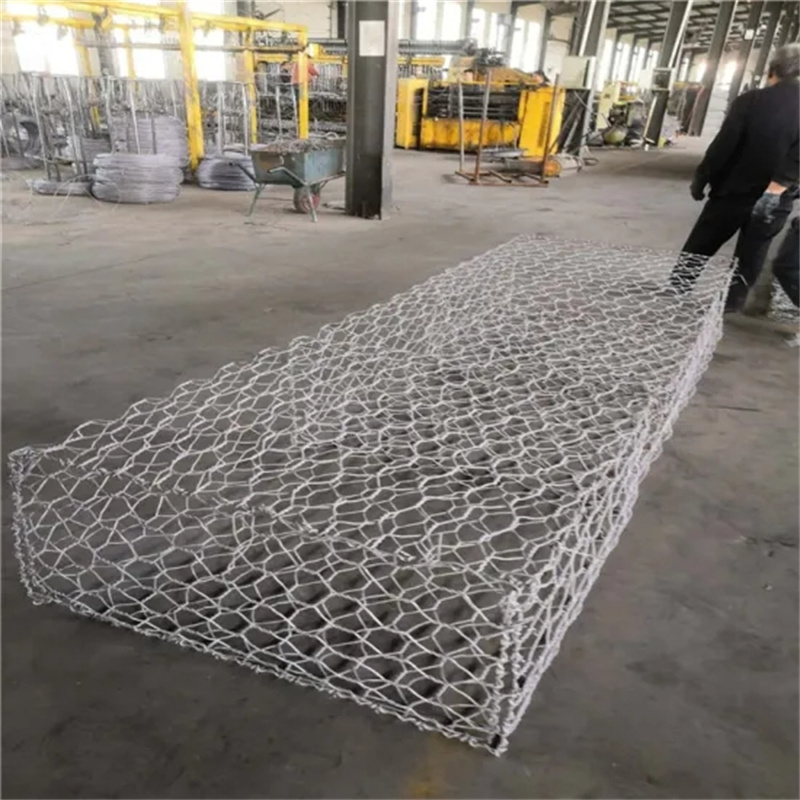Th9 . 18, 2024 18:40 Back to list
gabion mattress
Gabion Mattresses A Sustainable Solution for Erosion Control
In recent years, the issues surrounding soil erosion and riverbank degradation have escalated, prompting the search for effective, environmentally friendly solutions. Among various alternatives, gabion mattresses have emerged as a leading choice for many civil engineering and landscaping projects. This innovative solution not only addresses erosion but also integrates well into the surrounding ecosystem.
Gabion mattresses are essentially large, wire mesh containers filled with stones or other durable materials. They are usually deployed in layers to create flexible, permeable structures that can adapt to the contours of the ground. The design allows water to flow through while simultaneously preventing soil and sediment from washing away. This characteristic makes gabion mattresses particularly effective in managing water flow in riverbank stabilization, slope protection, and shore erosion prevention.
One of the primary advantages of gabion mattresses is their sustainability. The materials used—typically natural stones—blend seamlessly into the environment, creating habitats for various aquatic and terrestrial species. Unlike hard engineering methods, which can disrupt local ecosystems and pose aesthetic issues, gabion mattresses provide a more natural appearance and support ecological diversity. They influence the local habitat positively by facilitating the growth of vegetation that further stabilizes soil and offers shelter to wildlife.
Moreover, the construction and installation of gabion mattresses are relatively straightforward. These structures can be prefabricated and easily transported to locations where they are needed. This adaptability makes them an attractive option for projects in remote areas or locations that are difficult to access. The lightweight nature of the wire mesh means it can be handled without heavy machinery, reducing potential environmental disruption and minimizing the carbon footprint associated with transportation and installation.
gabion mattress

In addition to their ecological benefits, gabion mattresses are cost-effective. Compared to traditional methods of erosion control, such as concrete walls or riprap, gabion mattresses often require less material and labor, resulting in lower overall project costs. The long lifespan of gabion structures—often exceeding 30 years—further enhances their value, making them a wise investment for many municipalities and private landowners.
The versatility of gabion mattresses extends beyond erosion control. They can also be effectively utilized in constructing retaining walls, noise barriers, and even decorative garden elements. Their ability to withstand harsh weather conditions makes them suitable for various climates, from arid areas to regions prone to flooding. This multifunctionality has made gabion mattresses popular not only in civil engineering but also in landscaping and recreational design.
As environmental concerns become increasingly pressing, the adoption of gabion mattresses is expected to rise. They represent a paradigm shift in how we approach land and water management, moving away from traditional, rigid solutions toward more adaptive and nature-based methods. By choosing gabion mattresses, communities and landowners not only combat soil erosion but also contribute to creating healthier, more resilient ecosystems.
In conclusion, gabion mattresses are an effective, sustainable solution for addressing erosion and enhancing environmental integrity. Their ecological benefits, cost-effectiveness, and versatility make them a highly viable option for modern erosion control and landscape management efforts. As we strive for more sustainable practices in construction and environmental management, gabion mattresses are poised to play a pivotal role in shaping our approach to land protection and ecological restoration.
-
The Role of Galvanized Gabion Mesh in Riverbank Protection
NewsJun.26,2025
-
The Role of Gabion Basket Raised Bed in Sustainable Gardening
NewsJun.26,2025
-
Quality Assurance of Wire Mesh Gabion Baskets
NewsJun.26,2025
-
Installation Guide for Welded Gabion Box
NewsJun.26,2025
-
How to Choose the Right Gabion Box
NewsJun.26,2025
-
Different Types of Gabion Wire Mesh
NewsJun.26,2025
-
Why PVC Coated Gabion Mattress Is the Best Solution for Long-Term Erosion Control
NewsMay.23,2025






